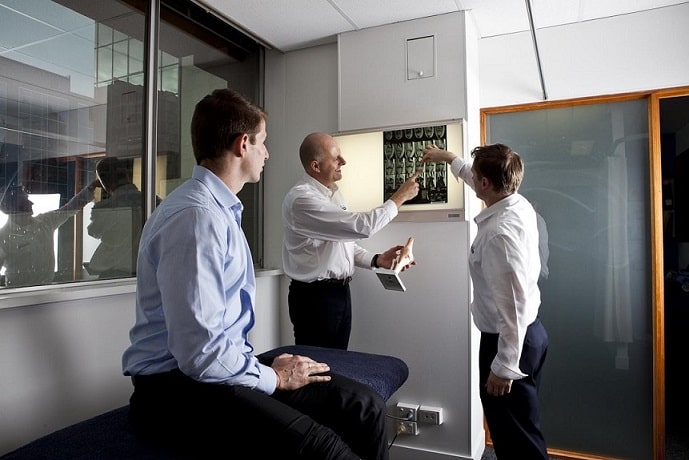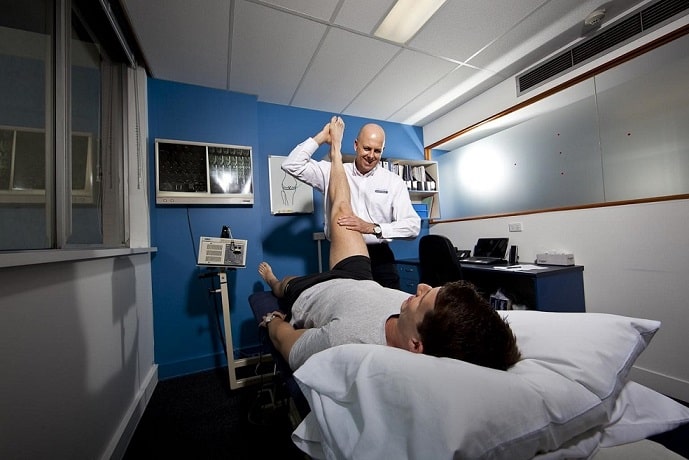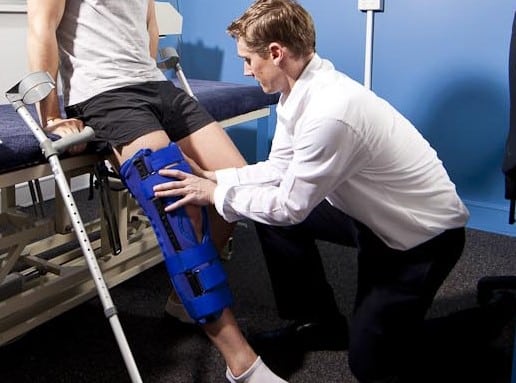Knee Pain Treatment Brisbane
Types of Knee Pain treated in our Brisbane City clinic
At All Care Physiotherapy, we’re experienced in treating knee pain that stems from a variety of conditions. The four main knee pain causes that we see are osteoarthritis, ITB friction syndrome, MCL injuries and kneecap pain.
Osteoarthritis
Osteoarthritis is a condition that affects the cartilage in joints. Normally, cartilage acts as a cushion between the bones in a joint and allows a smooth, gliding motion between bones. In osteoarthritis, the cartilage breaks down and can result in pain, stiffness and swelling of the affected area. Knee osteoarthritis is the most common type.
Factors contributing to the development of knee osteoarthritis include:
- Older age
- Repetitive bending, lifting or kneeling activities/occupations
- Past injuries to your knee (e.g. ACL rupture)
- Higher body weight
Your All Care Physiotherapist can assess your lower limb function to see what is not functioning correctly and fix the underlying biomechanical issues.


ITB friction syndrome
Osteoarthritis is a condition that affects the cartilage in joints. Normally, cartilage acts as a cushion between the bones in a joint and allows a smooth, gliding motion between bones. In osteoarthritis, the cartilage breaks down and can result in pain, stiffness and swelling of the affected area. Knee osteoarthritis is the most common type.
Factors contributing to the development of knee osteoarthritis include:
- Older age
- Repetitive bending, lifting or kneeling activities/occupations
- Past injuries to your knee (e.g. ACL rupture)
- Higher body weight
Your All Care Physiotherapist can assess your lower limb function to see what is not functioning correctly and fix the underlying biomechanical issues.
MCL Injuries
Injury to your medial collateral ligament (MCL) most commonly occurs when there is an excessive inwards stress to your knee, particularly so when it is bent slightly. This can stretch or rupture some or all of the ligament fibres. This commonly occurs in skiing (non-contact) but can also occur in contact sports when someone runs into your knee and pushes it inwards.
Symptoms of an MCL injury can include:
- Pain over the inside of your knee
- Swelling around the inside of your knee, that may spread to anywhere around your knee
- Stiffness of your knee, and decreased range of movement
- Tenderness over the inside of your knee
- Giving way or instability of your knee, particularly when standing up and walking.


Knee Cap Pain
Patellofemoral pain syndrome (or PFPS – knee cap pain) is the term used to describe pain that is coming from the joint between your kneecap (patella) and your thigh bone (femur), or the soft tissues around it. This joint is called the patellofemoral joint and it is at the front of your knee.
The pain that occurs in PFPS is caused by increased or abnormal loading through the patellofemoral joint, which can arise due to a number of factors including faulty kneecap position, quadriceps muscle imbalances around the knee, biomechanical factors including hip, knee, shin and foot postures and movements and decreased lower limb flexibility.
Knee Pain Treatment From All Care Physiotherapy
Assessing and changing how your knee moves can make a difference to how your knee functions leading to decreased pain. At All Care, we conduct a thorough examination to understand your body and the goals you have for your recovery before starting your physiotherapy treatment plan.
Treatment can include:
- Advice and education on your condition and your treatment plan
- RICE – rest, ice, compression, and elevation of your knee
- Wearing a brace to provide extra stability to your knee, and prevent excessive movements. A brace is normally required for 6 weeks with a grade 2 MCL injury.
- Soft tissue massage to reduce swelling
- Electrotherapy to reduce swelling
- Ultrasound to promote healing of the ligament
- Joint mobilisations
- Taping
- Graduated muscle-strengthening programs
Prevention Of Re-injury Through Your Knee Pain Treatment
One of our aims during your treatment is to train safer neuromuscular patterns during standing, cutting and landing tasks to minimise the risk of re-injuring your knee.
The key components of this aspect of treatment include:
- Plyometric, balance and strengthening exercises
- Program must be performed more than once per week
- Program continues for at least 6 weeks
Frequently Asked Questions
[sc_fs_multi_faq headline-0=”h4″ question-0=”How long does it take for knee pain to go away?” answer-0=”With proper care and treatment from a Brisbane City physiotherapist, you should see your knee pain start to fade in about three weeks. For more complicated cases, complete healing may take up to six weeks, however, this will vary from person to person.” image-0=”” headline-1=”h4″ question-1=”How do I treat my knee pain?” answer-1=”Start with the RICE method, as many causes of knee pain can initially be treated at home. Continue with heat or ice therapy as needed, or if pain persists, come see one of our professional physiotherapists in Brisbane City.” image-1=”” count=”2″ html=”true” css_class=””]
Contact All Care Physiotherapy today
At All Care Physiotherapy, we want to help you live pain-free. After a thorough consultation, we create a targeted treatment just for you. Contact us today to book an appointment in our convenient inner-city clinic.
